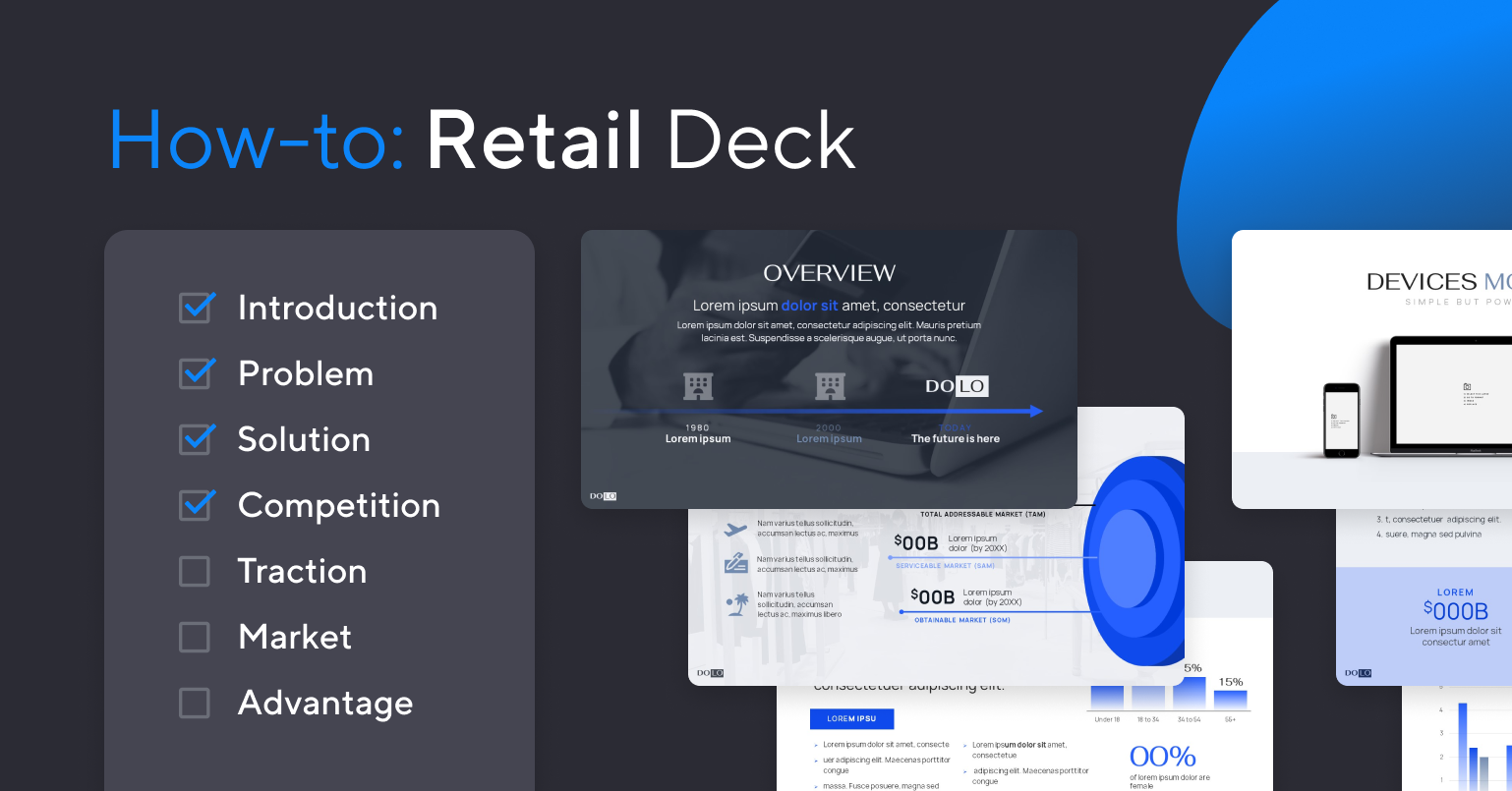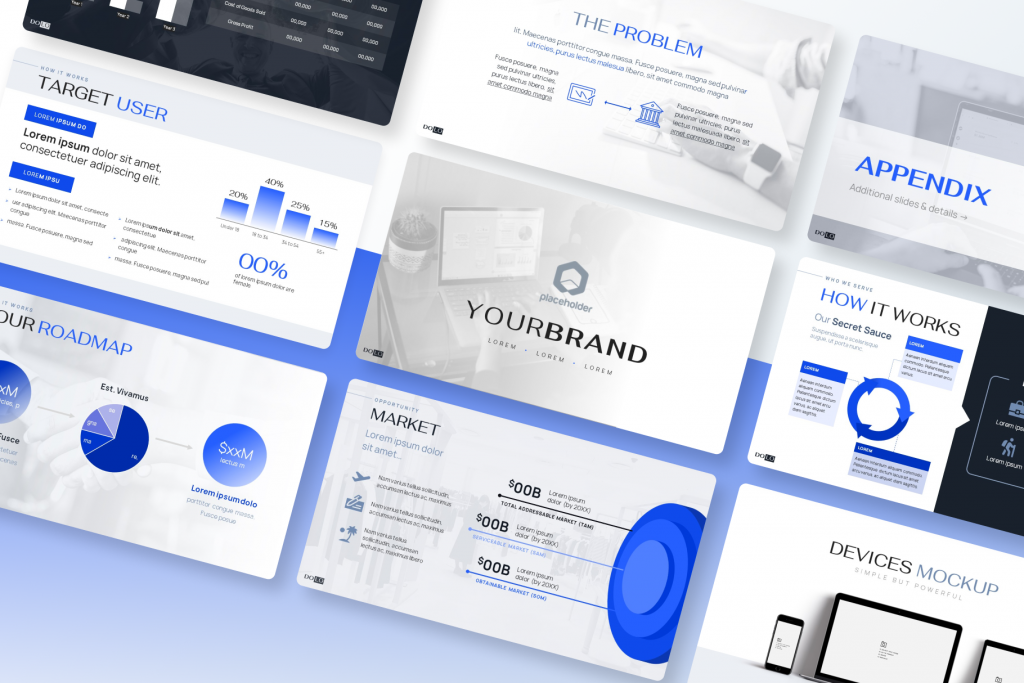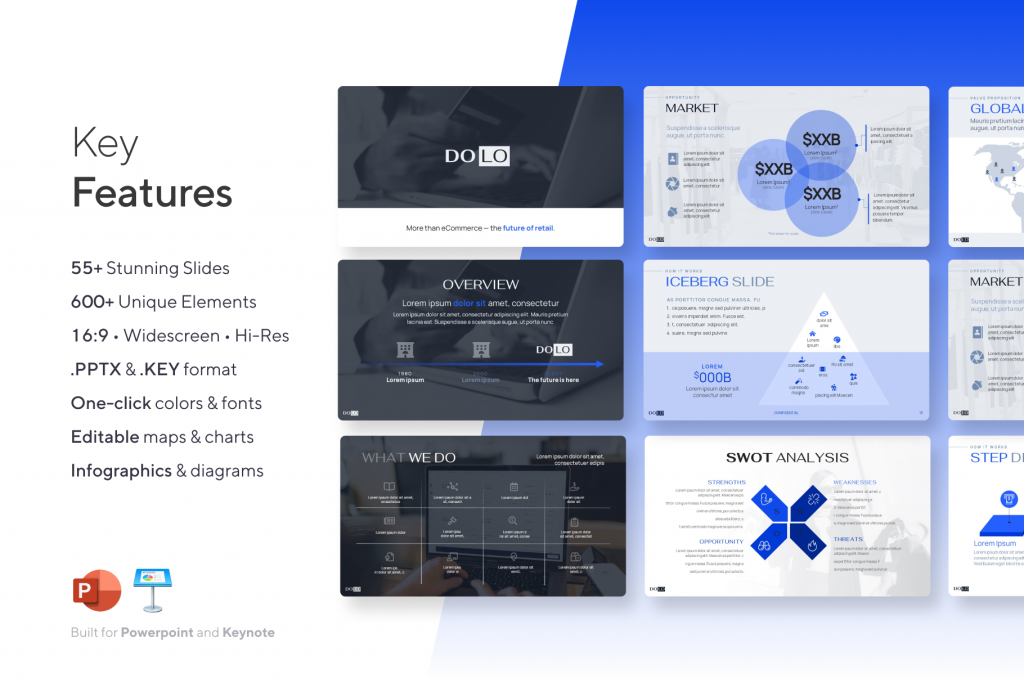If you’re a consumer-packaged goods (CPG) brand looking to make a splash in the industry, you’ll need a standout pitch deck to help you get noticed. CPG is a burgeoning market, projected to reach $8 trillion by 2024. With the rise of direct-to-consumer (DTC) brands, it’s never been easier for small businesses to break into the market. Just consider the success of DTC giants like Dollar Shave Club and Allbirds, who have disrupted well-established, traditional CPG categories and rapidly grown into household names.
In this article, we’ll provide tips and insights on how to create a pitch deck for your CPG / retail product startup that will help you stand out and win investor funding, as well as retail distribution.
The retail industry is as old as humans themselves: it can be traced back to 9000 BC when people exchanged cows and sheep. From mom & pop stores in the 1700s–1800s to the mega-stores such as Walmart in the 1960s, retail has seen its fair share of innovation. Since the advent of the Internet and its increasing use for e-commerce in the 1990s, retailing has shifted away from brick-and-mortar stores and toward online commerce. This shift has created behemoths such as Amazon and eBay that continue to dominate the online retail industry today.
In spite of the rapid expansion of eCommerce, the digital monster is not as dominant as it is portrayed (at least in the world of retail & CPG brands). eCommerce currently holds a minority market share of 16.4% globally and a projected 12.4% share of all retail in the USA.
If you have created an innovative consumer product, you are going to need the right investors & distributor to succeed. We have created pitch decks that have closed hundreds of millions of dollars in deals & funding for upstart retail and CPG brands — we know exactly what it takes to craft a winning deck:
What slides should you include in your Retail Pitch Deck?
Crafting any pitch deck requires a concise and simple approach. In a short window of time, the deck needs to address many key points and answer the most important questions. This means you might have to hold on to details that are of secondary importance. Following slides should be included to paint a 360-degree picture of your project without overcomplicating the presentation.
1. Pain Points
The scope of this slide is pretty simple. What is the pain point your startup wants to tackle and how that problem is affecting everyone. Because everyone buys stuff, you have a great opportunity to present the problem in a way that the audience can relate to. It also wouldn’t hurt to inject a sizeable dose of passion and commitment into the mix.
2. Solution Slide
After you have explained the problem in the previous slide, you would want to explain the solution in this slide. You should include a short demo, or at least screenshots, of your solution product. In this way, you reassure investors that you’ve already done some work instead of simply presenting ideas. Everyone loves a working product.
3. Opportunity Slide
Not all solutions can be turned into commercial products. The opportunity slide will detail how your offering can be turned into a successful business and will discuss the feasibility aspect. For example, if you have a revolutionary facial recognition technology, businesses could scan faces and check them against a database of known shoplifters.
4. Market Size / Target Consumer
In 2019, the global retail market generated sales of nearly 25 trillion U.S. dollars, with a forecast to reach close to 27 trillion U.S. dollars by 2022. Clearly, the wider retail market is massive. However, you want to present numbers that are related to your niche. This will depend on what your target consumer is and you will discuss that too.
5. Competition
For investors, your competition is very important or rather how you are better than your competition. If your customers have other options to solve the problem you’re solving, you’ll need to explain what other companies do to serve them. Describe what makes your approach unique and better than your competitors, whether it is better features, better pricing, or a better location. What makes a customer choose you over another company.
6. Unit Costs & Pricing
Because the unit cost and profit margins are important in the retail industry, it’s a good idea to share some numbers about that with the investors. Using visual aids is a good idea. Illustrations and photos enhance your deck’s compactness by embodying the mantra ‘show, don’t tell.’ Photos, after all, speak a thousand words.
7. Traction
If your product/service has accumulated some growth, show that off to establish credibility and trustworthiness. This can include any partnerships and all kinds of different metrics such as social media following, etc.
8. Distribution
How will you promote your business? What marketing tactics will you use? You need to describe how you get customers to your door and how the sales process works. Explain how salespeople get leads and what closing the sale is like for companies that have a sales force.
9. Go-to-Market
What is the cost of going to marketing and acquiring customers? Are you going to have a physical store or an online storefront? The cost side of acquiring the customer process will be discussed in this section.
10. Team
Your deck’s Team section is probably one of the most important parts if you’re seeking investment. The team section should include details about you and others who are helping you run the business. Focus on relevant experience. There’s no need to worry if your team isn’t complete yet. You can mention the most important roles available and highlight their experience.
11. Financials
Finance is another important concern for investors. You want to have detailed finances separately with you and present the highlights in the deck. Investors also want to see some financial projections. Your financial plan should highlight key dates and goals that you intend to hit. Discuss the key metrics that will be used to measure your success. Of course, you don’t have a crystal ball and can’t predict the future and no one is expecting you to. The point is to highlight where you see the project heading in 3-5 years.
In your estimates, you should be conservative and not overpromise. It is really important to be completely honest and open about your finances. You may also want to have details of your financials and the underlying assumptions with you, or (at the least), prepared for the next stage of diligence — most interested investors will want to take a deeper look than the pitch deck.
12. Ask
The pitch deck should have a clear ask section. Describe how much you need. Whether you’re getting loans or investments, you should highlight what you need, and when you need it. Ideally, you’ll also want to summarize the specific ways that you’ll use the cash once you have it in hand.
What key topics should a Retail Pitch Deck address?
Below are the questions every Retail deck should answer:
- Who is interested in your Retail product or service?
- What makes your product or service unique?
- What is your pricing and profit model?
- What traction or experience have you achieved?
- How do you acquire customers for your business?
- What investment (or deal) are you looking for? Why?
- What are your goals & key milestones? What are you going to achieve?
Designing an Retail Pitch Deck? Check this out:
You might be interested in the expert-designed Retail Pitch Deck Template created by our team at VIP.graphics: cutting-edge slides based on decks that closed millions in deals & investments for orgs of all sizes — from high-growth startups to Fortune 100 corporations. Super simple to customize in PowerPoint or Keynote, this template offers you ready-made elements & all the essential slides to help your business stand out: it’s a matter of minutes to create and share this convincing & professional deck with your stakeholders & investors — learn more here.


